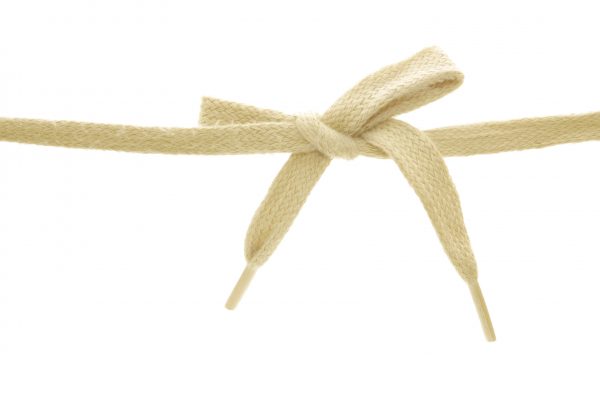It’s interesting to realize that something as simple as shoelaces can make a significant difference in your overall foot health, but it’s true. This is especially accurate if you are an avid runner. In fact, improperly lacing your shoes either too loosely or too tightly can put you at an increased risk for injury. Of course, an injury to your ankle or foot is the last thing you want to deal with as a runner.
Keeping your feet in good condition takes more than an emphasis on proper footwear, gait analytics and proper socks. It also requires you to lace up as you should.
The Importance of Proper Lacing: Yes, it Matters
Proper lacing can make all the difference in a shoe fitting properly or becoming problematic. Rob Voigt, manager of Georgetown Running Company in Washington, D.C. said the following on the subject:
“I’ve had runners slip on a pair of running shoes and say they feel great, but when they stand up or jog around the store or on the treadmill, they’ll tell me something just doesn’t seem right. I’ll re-lace their shoes and ask them to take another jog around the store, and I already know by their smile that lacing made all the difference.”

When your foot moves side-to-side in an excessive manner during running, this can create irritation that can lead to the development of tendinitis, blisters or even lead to overuse injuries. When your foot moves too much from front to back, you can easily end up with bruised toes. Lacing shoes too tightly can also negatively impact your foot health by irritating the nerves in your foot and injuring joints and tendons.
How to Make Sure Shoes Are Laced Properly
The idea, obviously, is to keep your foot stable and still within your shoe, but not without any movement. The sides of the shoe should not move excessively. It’s a happy medium between keeping your feet from moving too much within your shoes during a run and allowing the tendons space to adjust to your gait and natural movement.
Runners World explains that after you properly lace and tie your shoes, you should be able to place two fingers between the eyelets of your shoes. Space for three fingers means it’s too loose. One finger means the shoe is too tight.
Specific lace patterns can provide comfort for runners with all sorts of conditions, such as corns or bunions. Check out lacing tutorials like this one from On-Running or this one from REI co.op that teaches you how to use various types of shoe lacing methods, such as loop lacing and diagonal lacing to ensure your shoes fit optimally.
Types of Lacing Methods: How to Lace Shoes
The following is a quick breakdown of various lacing methods:
- Loop Lock Lacing: This is ideal when your shoe fits properly but still slips at the heel. You are, in essence, lacing the shoe, then going back to the eyelet to pull extra tight.
- Diagonal Lacing: This method frees your toes up by lifting the toe box away from your foot.
- Cross-Over Lacing: Use this lacing method if you have a high arch. You loosen the middle part of your laces to allow the middle part of your foot more room.
- Skip-Lacing: This method is ideal for a high midfoot. It allows for more room where you need it most. It is applicable for conditions like bunions.
- Speed Laces: If simplicity is most important, opt for this method that employs a single elastic lace that gives you to ability to slip your shoe right on.
- Straight Lacing: This relieves pressure on the top of your foot and gives you more space between eyelets.
- Gap Lacing: Use this lacing method to reduce pressure on sensitive areas on the foot. Lace as you usually would, skipping the areas of the foot that are extra sensitive.
- Side Lacing: This is ideal if you have flat feet or high arches. You do this by securing laces on the side of your foot.
How to Lace Running Shoes Properly: Two Methods
The following are two basic methods you can try with virtually any running shoes. They are applicable for all lace types, save the elastic, speed lacing varieties.

Runner’s Loop
This particular knot and lacing method keeps your heel secure and prevents toes from sliding forward in your shoe. If you are constantly feeling your foot slip forward when running, the runner’s loop can be the solution.
How to Tie a Runner’s Loop:
- Lace shoes normally, in the crisscross method, until you get to the second eyelet.
- Don’t cross over again, instead, pull each lace on the same side, placing it back into the eyelet on the same side, forming a loop.
- Pull lace ends across and then through the formed loop on the opposite side of your shoe.
- Pull lace ends out and up several times to shrink loops.
- Tie your shoes normally, using a shoelace knot if preferred.
Window Lacing
This prevents pressure points from forming on the uppermost part of your foot. This method is sometimes called box lacing.
How to Tie Window Lacing:
- Unlace your shoes until you get to the eyelet located right below the pressure point on your foot.
- Re-lace shoes in a straight method, up to the next eyelet, then cross laces over.
- Finish lacing shoes in your usual method.
Are The Laces Themselves Important?
In short, yes. If your laces are too worn out, they won’t tie properly. If you are struggling to loosen knots, you can also switch from round to flat laces. You can also opt for a synthetic material instead of cotton laces. Keep in mind, most laces are designed to endure throughout the lifetime of the shoe. Therefore, if your laces are worn out, it might be time to consider replacing your shoes themselves.
Get Seen Today
You don’t want to be sidelined as a runner due to any foot or ankle injury. While it’s smart to keep proper fit and lacing practices in mind, that isn’t always enough to prevent foot-related injuries. In fact, if you are experiencing numbness, skin issues or pain in your feet area, you need to see a podiatrist for proper evaluation.
At The Foot & Ankle Group, we can help you get back on the road as quickly as possible. We can determine what is wrong with either your gait, shoes or lacing methods that might be causing the problems you are experiencing. Our practice allows same-day visits and works to accommodate you as a patient, giving you the immediate relief you need from a painful foot or ankle condition.
Stop dragging your feet and contact us today at 239-936-5400!
Categorized in: Blog
Comments are closed